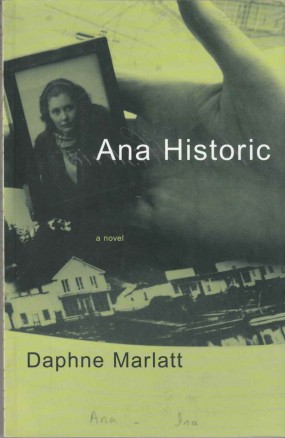Key Themes

Ana Historic (1988) by Daphne Marlatt. House of Anansi Press
History
- How does Annie position herself against history in the first part of the book (9–35)? How does this relate to writing and erasure?
- What is
history’s voice
(48)? How does this personification of history find its way into what Annie knows about Ana? Why doesn’t she want to believe this voice?
- How does Marlatt play with facts and imagination? Is it clear what is fact, memory, or conjecture?
Mother/Father and Male/Female Relationships
- How does Annie remember competing with her mother for her father’s attention? How does this shape her self-awareness of her newfound femininity in relation to a masculine gaze?
- Consider the interchangeability of names and female positions in this text and Annie’s relationship with Richard. How does his privileged position allow him the possibility of
replacing
her (147)? Why might it matter that this is at the end of the text?
Language
- Consider the use of language to suggest identity or ownership. How is language and form handed down, and how does it reproduce the norms that Annie subverts in her own narrative?
- How does the language in the text switch between a reading of history, to memory, to possibility? How are these different ways of narrating blended together in the text?
- How does Marlatt delineate who is speaking, or who is speaking for whom?
Works Cited
- Marlatt, Daphne. Ana Historic. Toronto: Coach House, 1988. Print.
First Published: Nov 22, 2013
| Last Revised: September 26, 2017









 ©
©